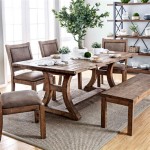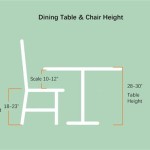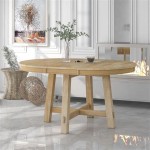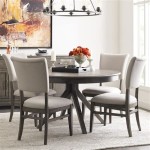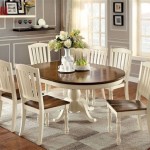Small Dining Table Solutions for Apartment Living
Apartment living often necessitates strategic choices regarding furniture selection. Space is a premium, and every item must contribute functionality without overwhelming the available square footage. The dining table, a central piece for meals, work, and socialization, requires careful consideration. A small dining table can provide a dedicated eating area without sacrificing valuable living space, offering a practical and stylish solution for apartment dwellers.
The selection process for a small dining table involves evaluating existing space, considering occupant needs, and exploring design options that maximize usability. Prioritizing these factors ensures a dining table complements the apartment aesthetic and serves its intended purpose effectively.
Assessing Spatial Constraints and Occupancy Needs
Before embarking on the search for a small dining table, a thorough assessment of the available space is imperative. Measuring the designated dining area provides concrete dimensions within which to work. This process prevents the selection of a table that is disproportionately large, hindering movement and creating a cramped environment.
Consider the optimal size and shape of the table based on these measurements. A round table might be suitable for a smaller, more intimate setting, while a rectangular table could better utilize a narrow space along a wall. The goal is to identify a maximum table size that allows for comfortable seating and passage around the table.
Furthermore, the anticipated number of regular occupants significantly influences the table size. A single individual or a couple might only require a compact table suitable for two. However, if entertaining guests is a frequent occurrence, a table with an extendable leaf or drop-leaf design offers greater flexibility.
Think about lifestyle aspects that extend beyond typical dining. Will the table also serve as a workspace? Will it be used for hobbies or projects? Answering these questions informs the necessary surface area and desired features, such as built-in storage or a durable, easy-to-clean tabletop.
Exploring Table Styles and Material Options
The aesthetic appeal of the dining table should harmonize with the apartment's overall décor. Selecting a style that complements existing furniture and design elements creates a cohesive and visually pleasing environment. Numerous styles cater to different tastes, from minimalist and modern to rustic and traditional.
Modern and minimalist apartments benefit from clean-lined tables crafted from materials like glass, metal, and light-colored wood. These tables often feature simple designs with a focus on functionality and understated elegance. Conversely, rustic or industrial-themed apartments might incorporate tables made from reclaimed wood, metal legs, and distressed finishes, contributing to a more robust and textured aesthetic.
Material selection plays a crucial role in both the dining table's appearance and durability. Solid wood tables provide longevity and visual warmth, while laminate or veneer tables offer a more budget-friendly alternative. Tempered glass tabletops create an open and airy feel, making a space appear larger. Metal tables are known for their sturdiness and can add an industrial edge to the décor.
The choice of chairs is intrinsically linked to the table's style and material. Opting for chairs that contrast or complement the table's design enhances the overall aesthetic. For instance, pairing metal chairs with a wooden table can create a modern and eclectic look. Consider the chair's height in relation to the table to ensure comfortable seating and proper ergonomics.
Maximizing Functionality Through Clever Design
Several design features can enhance the functionality of a small dining table, especially in space-constrained apartments. Extendable tables, featuring drop-leaf or butterfly leaf mechanisms, offer the versatility to accommodate additional guests when needed. When not in use, the leaves fold down, minimizing the table's footprint.
Tables with integrated storage solutions provide valuable space-saving options. Drawers built into the table's apron can store cutlery, napkins, or placemats. Shelves beneath the tabletop can hold books, magazines, or decorative items. These integrated storage features help eliminate clutter and maintain a tidy dining area.
Folding tables or wall-mounted tables are ideal for extremely small apartments or studios where space is at a premium. These tables can be easily folded down and stored away when not in use, freeing up floor space for other activities. Wall-mounted tables offer a semi-permanent solution, providing a dedicated dining surface that can be quickly deployed and stowed.
Round tables, particularly those with a pedestal base, can maximize seating capacity in a smaller space. The absence of corners allows for more people to comfortably gather around the table. A pedestal base also eliminates the need for table legs, providing more legroom and a less cluttered appearance.
Consider incorporating a table with a light and airy design to create the illusion of more space. Tables with slim legs, transparent materials, or light-colored finishes can visually lighten the dining area, making it feel more open and inviting.
Addressing Practical Considerations: Durability and Maintenance
The longevity and ease of maintenance of a small dining table are crucial factors, especially in an apartment setting where furniture might experience higher usage. Choosing durable materials and finishes extends the table's lifespan and reduces the need for frequent replacements.
Solid wood tables, while potentially more expensive, offer exceptional durability and can withstand years of use. However, they require regular maintenance, such as polishing and oiling, to prevent damage from moisture and scratches. Laminate or veneer tables, on the other hand, are more resistant to scratches and stains, making them a practical choice for everyday use.
The table's finish should be appropriate for its intended use. A water-resistant finish is essential for preventing damage from spills and condensation. A heat-resistant finish protects the tabletop from hot dishes and cookware. Thoroughly researching the available finishes and selecting one that aligns with the anticipated usage patterns ensures the table remains in good condition for years to come.
Consider the ease of cleaning and maintenance when selecting the table's material. Glass tabletops require frequent cleaning to remove fingerprints and smudges, while wooden tables might require specialized cleaning products. Selecting a table made from a material that is easy to wipe clean and maintain reduces the amount of time and effort required to keep it looking its best.
Integrating the Dining Table into the Apartment Layout
The strategic placement of the dining table within the apartment layout significantly impacts the overall flow and functionality of the space. Carefully considering the table's location in relation to other furniture pieces and existing architectural features creates a harmonious and organized environment.
Positioning the table near a window provides natural light, enhancing the dining experience and creating a more inviting atmosphere. Natural light can also make the dining area appear larger and brighter, especially in smaller apartments. However, be mindful of direct sunlight, which can fade or damage certain materials over time.
Consider placing the table against a wall to maximize floor space, particularly in narrow apartments. This arrangement allows for more open circulation and prevents the table from obstructing pathways. A bench seat can be placed along the wall to provide seating while further conserving space.
If the apartment features an open-concept living area, the dining table can serve as a visual divider, delineating the kitchen and living spaces. This creates a sense of separation and defines distinct functional areas within the larger open space. Use rugs or lighting to further define the dining area and create a cohesive design.
Ensure adequate clearance around the table for comfortable seating and movement. Ideally, there should be at least 36 inches of space between the edge of the table and any nearby walls or furniture. This allows individuals to easily pull out chairs, move around the table, and navigate the space without bumping into obstacles.
Think about the proximity of the dining table to the kitchen. Placing the table near the kitchen facilitates easy serving and clean-up. However, avoid positioning the table directly in the kitchen's main thoroughfare to prevent congestion and interference with cooking activities.
Accessorizing and Personalizing the Dining Area
Once the small dining table is in place, accessorizing and personalizing the surrounding area enhances its aesthetic appeal and creates a more welcoming and comfortable dining environment. Carefully selected accessories can tie the dining area together and reflect the occupant's personal style.
A well-chosen centerpiece can add visual interest and personality to the dining table. A vase of flowers, a decorative bowl, or a collection of candles can serve as a focal point and enhance the overall aesthetic. Ensure the centerpiece is not too large or tall, as it can obstruct views and hinder conversation.
Placemats and table runners provide both aesthetic and practical benefits. They protect the tabletop from scratches and spills while adding color, texture, and visual interest. Choose placemats and table runners that complement the table's style and the apartment's décor.
Wall art and decorative mirrors can further enhance the dining area's ambiance. A strategically placed mirror can reflect light and create the illusion of more space. Wall art, such as paintings, prints, or photographs, can add personality and visual appeal. Ensure the artwork complements the table's style and the overall décor.
Appropriate lighting is essential for creating a comfortable and inviting dining environment. A pendant light or chandelier suspended above the table provides focused illumination and adds a touch of elegance. Consider incorporating dimmer switches to adjust the lighting level to suit different occasions.
Personalize the dining area with items that reflect your interests and personality. Displaying cherished mementos, family photos, or travel souvenirs adds character and creates a space that feels uniquely yours. These personal touches transform the dining area into a warm and inviting space where you can enjoy meals and create memories.

Mateo Drop Leaf Dining Table 30 54 Pottery Barn

Oak Solid Wood Retractable Dining Table

Folding Dining Table With 6 Wheels Kitchen 2 Layer Storage Shelf Space Saving For Small Apartment Rustic Brown And Black

Solid Wood Folding Multifunctional Dining Table For Small Apartments Sps Furntiure

Ping For Compact Dining Tables The New York Times

Solid Wood Folding Multifunctional Dining Table For Small Apartments

Small Dining Table Set For 2 Kitchen With Upholstered Chairs Space Apartment Home Studio

48 Brilliant Small Apartment Ideas For Space Saving Matchness Com

Design Dilemma How To Create A Dining Room In Small Space

Small Space Solutions Seattle Apartment Dining Area The Inspired Room

